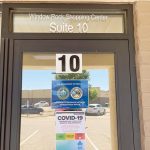
Nation opposes draft redistricting maps

Navajo Times | Donovan Quintero
President Jonathan Nez holds a paper that illustrates a redistricting proposal during a public meeting that discusses how the plan could split the tribe if adopted on Tuesday evening in Window Rock.
WINDOW ROCK
If the Arizona Independent Redistricting Commission’s draft grid map comes to fruition, Navajo voters might no longer get their mutton stew and fry bread at the polls.
That’s because the mandated U.S. Constitution process that requires the reallocation of congressional districts using 2020 Census data is again moving and rearranging legislative and congressional lines in Arizona.
States are responsible for creating the maps. For Arizona, in 2000 voters passed Proposition 106, which amended the Arizona Constitution by removing the power to draw congressional and state legislative districts from the state Legislature. The task was reassigned to the Independent Redistricting Commission, or IRC.
In proposed reapportionment, the Apache County boundary creates two new legislative districts –District 6 and 7.
Traditionally LD7 stretched across the state, from Kingman to the Navajo Nation. But the new boundaries take away Coconino and Navajo counties while keeping Apache County.
The proposed Legislative District 6 would includeCoconino County and nearly all of Navajo County. It would add Greenlee County, the southern tip of Navajo County, Gila, Graham, and Cochise counties.
The boundaries of Congressional District 1, which is made up of seven counties including all three counties that include the Nation, were also redrawn.
The new suggested congressional district would be CD2, which shrinks CD1 significantly, includingonly the southern part of Maricopa County.
The new congressional district – CD2 – would still represent the tribe but would add Cochise and Yavapai counties and the northern area of Maricopa County. It would lose Grand Canyon.
Tribal opposition
The draft map caught the attention of Navajo Nation officials, who voiced opposition to the suggested changes.
President Jonathan Nez compared connectivity issues. He said when the census data collection took place, the internet was not reliable.
“There was not that much reliability on internet connectivity, which plays a factor into our discussion today,” Nez told the commission during a video conference. “As Navajo people, we are the data experts for our own communities.
“Therefore, once again on behalf of the Navajo Nation, I respectfully request the Arizona Independent Redistricting Commission to recognize the political boundary of the Navajo Nation as a community of interest,” he said.
“And as you can see in these maps, the districts, the proposed lines are dividing, separating the Navajo Nation,” he noted.
Nez told the commission the adopted map for the legislative district was a concern for the tribe.
Leonard Gorman, executive director for the Navajo Nation Human Rights Commission, said the commission had to hurdle the Voting Rights Act.
“It’s gonna be a challenge,” Gorman said. “We have to be creative in settling the concerns about the VRA (Voting Rights Act).
“The two split – Districts 6 and 7 – in the grid map are unacceptable,” he said, “So, scrap LD6 and LD7 and start off with the original LD7 that will begin the process to achieve the 63% Native American voting-age population.”
Gorman said the new suggested alignment of CD1 was also unacceptable.
“For both LD7 and CD1, if you go below 63% for LD7, and 23% for CD1, we’re seriously consider your retrogression issues,” Gorman told the commission. “Those are the two factors for the legislative and congressional districts.”
And if the legislative district splits, it would also force Navajo voters to travel a greater distance to vote in tribal elections before voting in state elections.
Impacts on Diné voters
Most times, tribal and state elections are held under one roof. And with gas prices hovering around $3.20 per gallon for regular unleaded, it means having to spend more money on fuel with money that could be used to buy food or water.
While the Native Americans in New Mexico make up 8.7% of the state’s population, 3.7% in Arizona, and 0.9% in Utah, the Nation’s counties tell a different story.
In San Juan County, Utah, Native Americans make up 49.5% of the county’s population.
In Arizona, Natives in Apache County are the dominant population with 70.4%. In Navajo County, it was 43.6% and in Coconino County, the percentage is much lower, at 24.2%.
In New Mexico, the percentage of Natives in McKinley County is 76%, in San Juan County, it is 39.8% and in Cibola County, it is 43.3%.
To redistrict the congressional and legislative lines means it could potentially violate the VRA and impact where Navajo voters go to vote.
“And that’s a form of disenfranchising Navajo voters, OK, because we have to go to different directions to cast all our ballots,” Gorman said. “And it’s ridiculous.
“It’s crazy. It shouldn’t be like that,” Gorman said. “All these precinct boundaries should conform with the Navajo political subdivision boundaries.
“According to the Voting Rights Act, they have to strive to reach that.”
‘Devastating’ consequences
Former Navajo Board of Election Supervisor LeNora Fulton introduced herself with her clans and told the commission how Navajo people identified how they were related to one another.
To divide LD7 would be “devastating to us,” she said.
“It is like dividing your family,” Fulton said. “It’s like taking mom and dad are apart, and the children are out there wandering around. “This is not acceptable,” she said. “So, we are asking that we have the map reviewed.”
Fulton told the commission the Navajo clan system has existed since time immemorial.
“So, we are all related as a Nation, and this is how we interact in any setting, whether it’s political or in voting,” she said. “And one of the things that I’m looking at is a concern is this Legislative District 7, that we currently have is something that took a long time to get to this place.
“This is where the people are happy,” she said. “We are one unit; the Navajo Nation is a large community.”
The next meeting will take place Oct. 7 at the Kayenta Township Hall at 4 p.m. (MST).
To participate call 404-397-1516, use the access code 246 610 37519; or by video, download WebEx, use event number 2466 103 7519, and use password DfJMG2GdU52 (33564243 from phones).

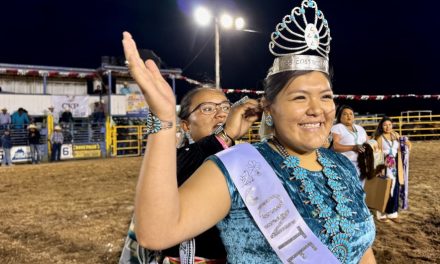
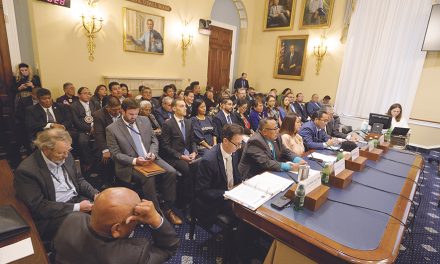
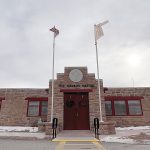
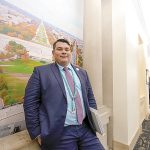

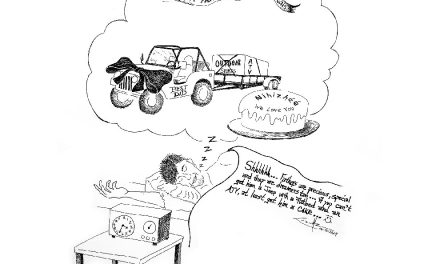

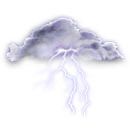
 Highway 264,
Highway 264, I-40, WB @ Winslow
I-40, WB @ Winslow